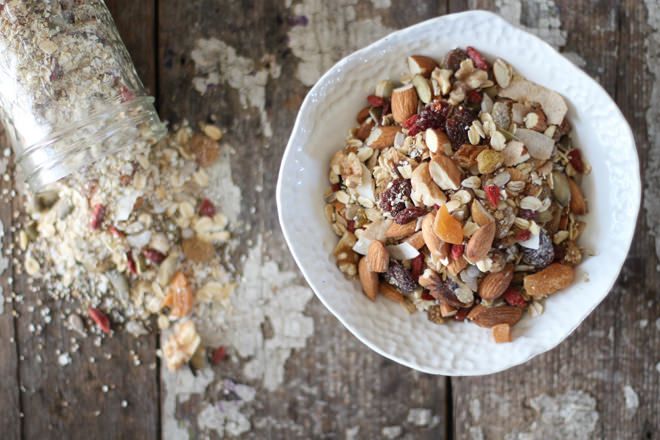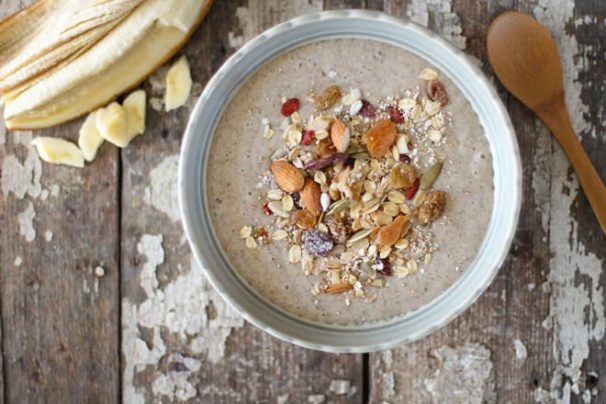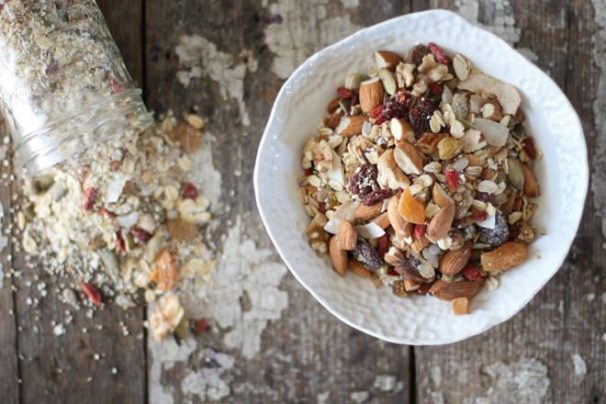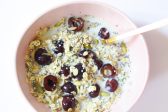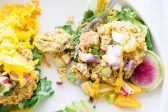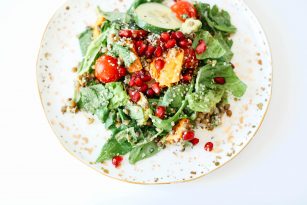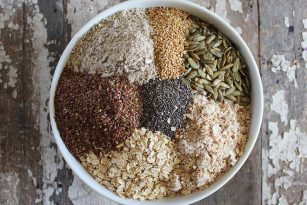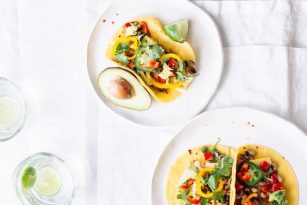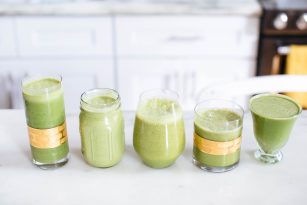This muesli recipe is an incredibly nutrient-dense mixture of nuts, seeds, grains, dried fruits, and spices that is full of fiber, protein healthy fats, and carbohydrates.
Nourishing Muesli is a classic muesli recipe that I hope you’ll enjoy as much as I have been for breakfast or as a quick component to add nutrients to a dessert like ice cream. Granola is a hit on smoothie bowls, with homemade nut milk, or by the handful, but muesli is also a great option for a quick healthy recipe using pantry staples like nuts and seeds. Not to mention, it’s so easy to make a large batch to last you several weeks, if not a month, in the pantry!
This nourishing muesli recipe is called nourishing for a reason — it’s nourishing, energy-dense, delicious and so easy to make. In the US we’re most familiar with granola and typically think of it as a treat or breakfast cereal, but granola has a sister that’s very similar and just as delicious. Muesli has quickly grown in popularity here in the US and for good reason — it’s delicious!
What is Muesli?
Pronounced as “muse-lee”, it is an uncooked mixture of nuts, seeds, grains, dried fruits, and spices. Muesli can be mixed with nut milk, yogurts, fruit juices, or eaten by itself. It’s a very popular dish in Switzerland and Germany as a light breakfast and is also a great source of nutrition.
What’s the difference between granola and muesli?
Basically, muesli and granola contain very similar ingredients but are prepared differently. Granola typically involves both an oil or fat and sugar or sweetener and is baked — that’s’ how granola gets that crispy texture and sweet flavor.
For example, in our granola recipes, we use coconut oil and maple syrup, nut butter, coconut nectar, etc. Muesli, on the other hand, doesn’t contain added oils, sugars, and is eaten raw or uncooked. Both are delicious, nutrient dense, and easy to make and serve.
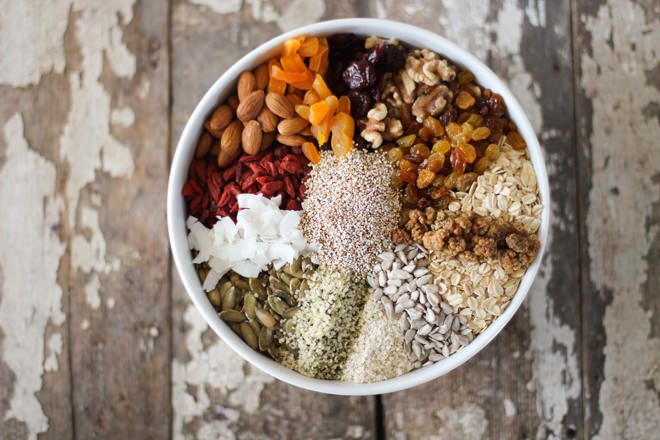
How To Eat Muesli
Use muesli as a topping: Add as a topping to a smoothie bowl like the Banana Blast Smoothie Bowl
Use muesli as a cereal: Pour homemade nut milk into a bowl of muesli for a simply delicious breakfast
Use muesli as a snack: Pre-portion small snack size bags full of muesli for an on-the-go snack
Use muesli as a dessert: Top BanaNO Cream or Simply Coconut Ice Cream with muesli for a healthy crunch
Use muesli as a yogurt: Top on yogurt or alternate layers of yogurt with muesli for a healthy parfait
Use muesli as a porridge: Soak with nut milk and heat to cook and soften for a warmer version of this recipe
Muesli can be eaten in a variety of ways and dishes from sweet to savory, but you can also change the texture of muesli by choosing to soak or not.
Should you soak muesli?
You can choose to soak muesli or eat it raw. Either way you choose to eat muesli, the nutrient benefits for both are still fantastic compared to most Standard American Diet breakfasts. Eating muesli raw is great for cool dishes like topping on cold yogurt, Stripped Green Smoothie Bowls, or with homemade nut milk.
Soaking muesli may be easier to digest for some people with digestive issues or those who enjoy the texture of a porridge or warm cereal. Soaking may also be beneficial because it helps in reducing the amount of phytic acid. Phytic acid is naturally present in whole grains, nuts and seeds, and it plays a role in the way our bodies absorb minerals as it hinders it in most cases.
Phytic acid chelates (which is a fancy way of saying it binds to) zinc, iron, calcium, and magnesium to some degree, making the overall nutrient content of those minerals less because our bodies have a harder time absorbing and utilizing them.
Phytic acid can be reduced by cooking or soaking and sprouting the grain, nut, or seed. Since calcium, zinc, and iron are several “nutrients of concern” in vegetarian diets, you can see why sprouting and soaking whole grains, nuts and seeds are beneficial for these lifestyles.

